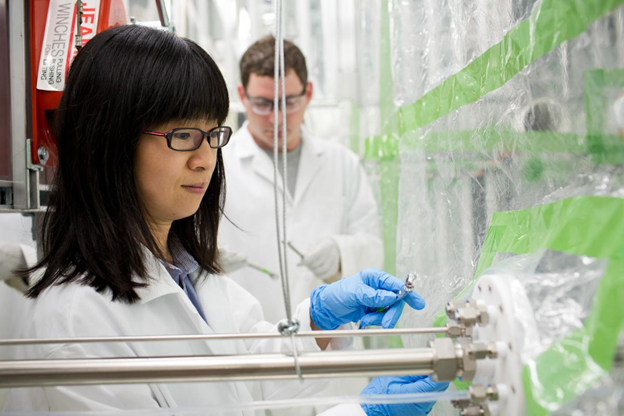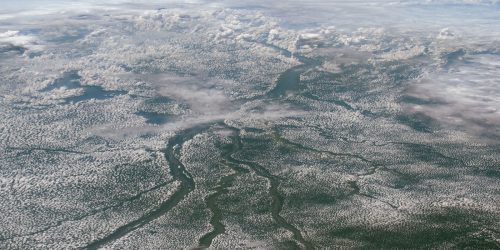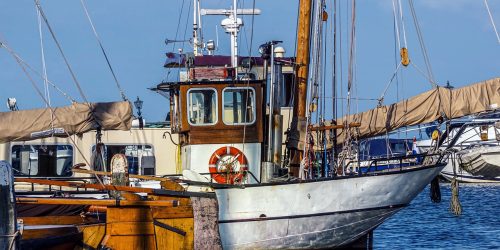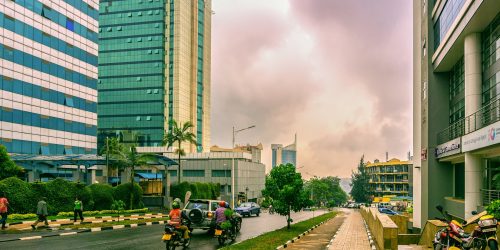NOAA’s Atmospheric Chemistry, Carbon Cycle, and Climate (AC4) Program is funding thirteen new projects including $1.7 million initially and $5 million over three years following a highly competitive funding competition.

Aerosols and aerosol formation have a significant influence on both climate and air quality. There are, however, a number of uncertainties in fully understanding and representing reactive nitrogen processes in the atmosphere as they relate to aerosol formation. A particular example is the production of secondary organic aerosols (SOA) due to the interaction of anthropogenic NOx and biogenic emissions. The resulting production and abundance of aerosols is not well understood in a potentially changing chemical regime, as NOx emissions continue to decrease throughout US. This is particularly the case in the Southeast US due to its large biogenic emissions in close proximity to large anthropogenic emissions. Several recent field campaigns have addressed the interaction between anthropogenic and biogenic emissions in distinct geographical regions and seasons (e.g. SAS, CALNEX, FRAPPE etc.), and significant data is available to address uncertainties.
In FY18, as part of a continuing interest in the nitrogen cycle, the AC4 program announcement focuses on laboratory, modeling, and analysis studies (of existing field data) that address one or more of the following priorities:
- Investigate the mechanisms of BVOC oxidation involving reactive nitrogen species in yielding organic nitrogen aerosols and/or their role in NOx removal.
- Perform complementary chamber and/or laboratory studies to better constrain NO3- BVOC reaction mechanisms and organic aerosol formation.
- Use relevant satellite products or develop new ones (e.g. formaldehyde), particularly from SNPP/JPSS-1 and their predecessors
The thirteen new projects supported by AC4 in FY18 competition include:
- Development of a Formaldehyde Product from the Ozone Mapping Profiler Suite Nadir Mapper (OMPS-N) on Suomi-NPP and JPSS-1
- PI: Caroline Nowlan, Smithsonian Astrophysical Observatory
- Constraints on the relative roles of N2O5 heterogeneous and NO3 gas-phase chemistry in secondary aerosol production
- PI: Timothy H Bertram, University of Wisconsin, Madison
- The aging of aerosol nitrate and implications for the global nitrogen cycle
- PI: Jesse H Kroll, Massachusetts Institute of Technology
- co-PI: Jennifer Murphy, University of Toronto
- Laboratory Chamber Studies on Organic Nitrate and Secondary Organic Aerosol (SOA) Formation from Oxidation of Monoterpenes
- PI: Nga Lee Ng, Georgia Institute of Technology
- Quantitative Investigation of Mechanisms of Oxidation and SOA Formation from Terpenes under Different NOx Regimes
- PI: Paul J Ziemann, University of Colorado, Boulder
- Anthropogenic influence on the oxidation of biogenic volatile organic compounds: implications for formation of secondary organic aerosols
- PI: Jinggiu Mao, University of Alaska, Fairbanks
- co-PI: Nga Lee Ng, Georgia Institute of Technology
- The role of in-canopy processes on biogenic VOC oxidation and formation of organic nitrogen aerosols
- PI: Allison Steiner, University of Michigan
- Measurements and modeling of organic nitrate gases and aerosol: Influences on the lifetimes of NOx,ozone and aerosol
- PI: Ronald C Cohen, University of California, Berkeley
- Constraining NOx-BVOC Oxidation Chemistry and Feedbacks Using Oxygen Stable Isotopes
- PI: Wendell Walters, Brown University
- co-PI: Nga Lee Ng, Georgia Institute of Technology
- Oxidation mechanism and organic aerosol formation from the a-pinene and pinonaldehyde reactions with NO3 radicals under near-ambient conditions
- PI: Tran B Nguyen, University of California, Davis
In addition, three new projects with delayed start dates were funded from the FY16 FIREX competition:
- Investigating the Chemistry and Fate of Reactive Nitrogen (NOy) Species in Biomass Burning Smoke using FIREX Data
- PI: Daniel Tong, University of Maryland, College Park
- Improving emissions, predictions and impact assessments of biomass burning smoke and dynamic air quality using FIREX observations, ground networks and satellite data
- PI: Pablo Saide, University of California, Los Angeles
- Building and testing the framework to integrate detailed chemical measurements and predictive biomass burning models
- PI: Christine Wiedinmyer, University of Colorado, Boulder









